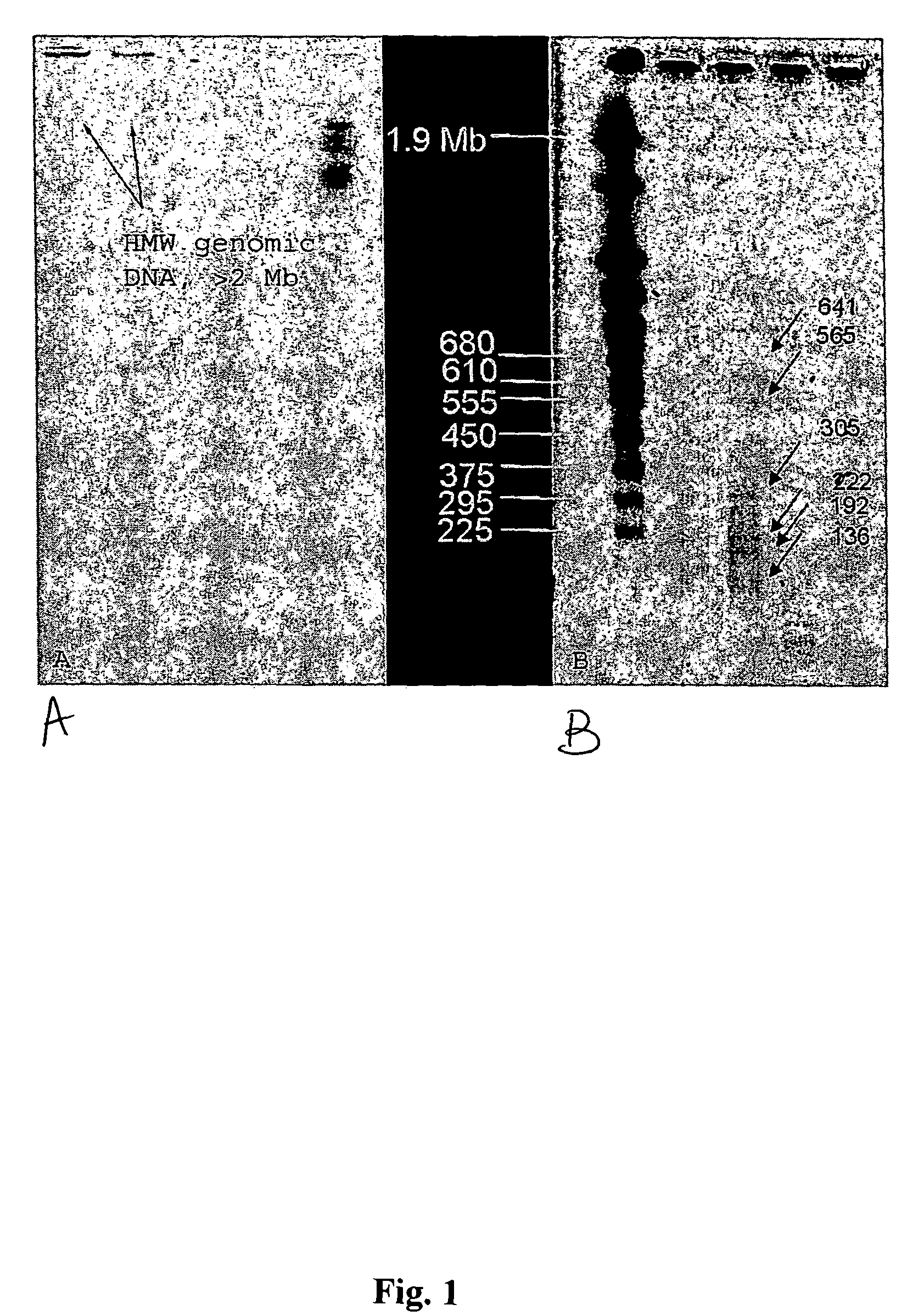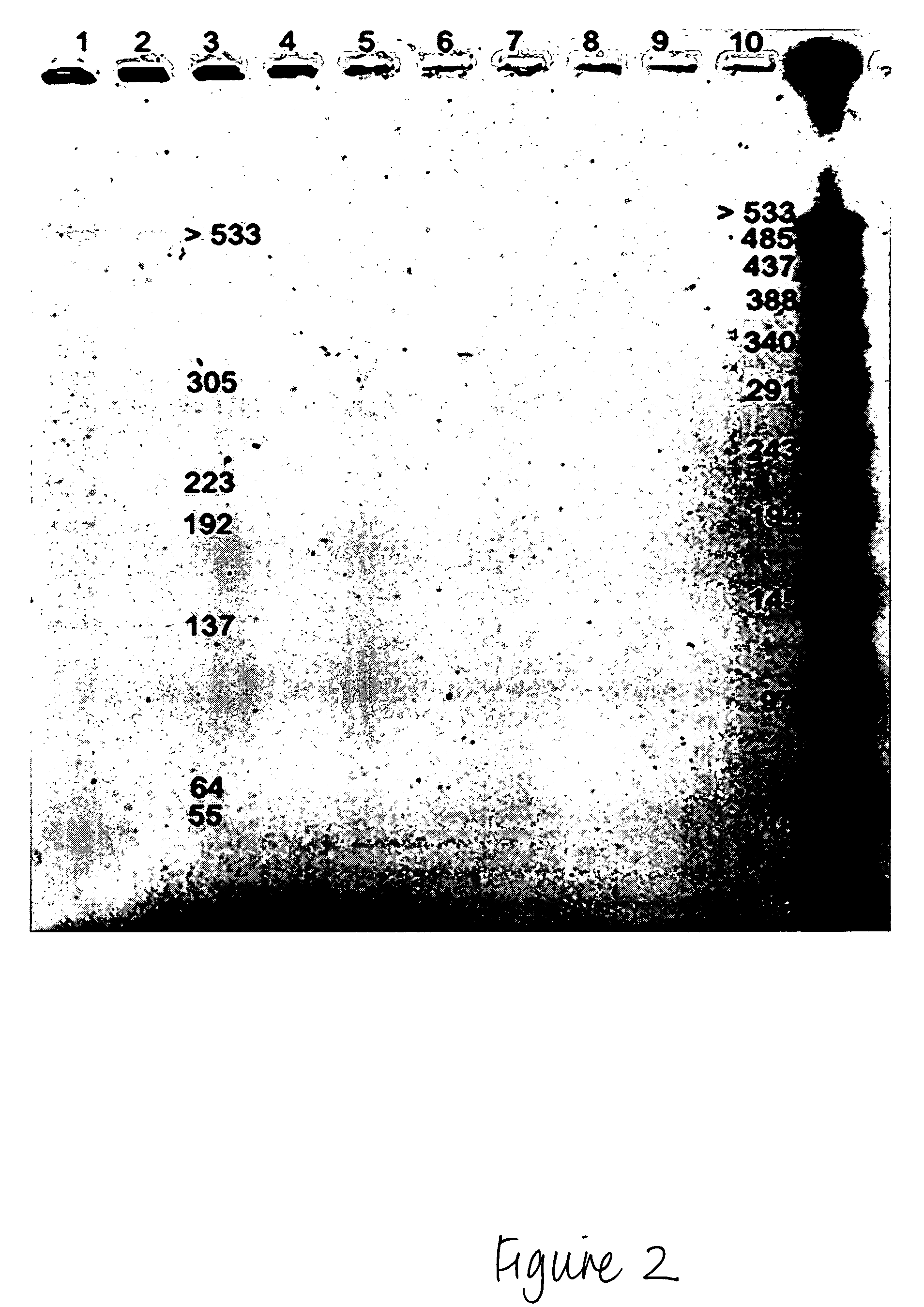Methods for isolation of nucleic acids from prokaryotic spores
a technology of prokaryotic spores and nucleic acids, which is applied in the field of extracting and isolating nucleic acids, can solve the problems of insufficient dna isolation using these methods, affecting the structural integrity of the spore, and affecting the spore dna, so as to facilitate the detection of biohazardous spores, minimize potential infection, and high molecular weight (hmw).
- Summary
- Abstract
- Description
- Claims
- Application Information
AI Technical Summary
Benefits of technology
Problems solved by technology
Method used
Image
Examples
example 1
Method for Isolating HMW Genomic DNA from Prokaryotic Spores
[0112]108 spores were resuspended in 100 μl spore decoating solution (8M urea, 1% SDS, 50 mM Tris, 10 mM EDTA, 2% β-mercaptoethanol, pH 10). The spores were incubated at 90° C. for 5 minutes, spun down and resuspended in 1 ml wash solution (5 mM Tris, 5 mM EDTA, 0.05% Tween 20, 0.05% Triton-X-100, pH 8). The spores were washed three times, gently pelleted and then resuspended in 100 μl of a first lysing buffer (10× wash solution, pH 8). Lysozyme was added to a final concentration of 2 mg / ml. PlyG lysin can be used at a final concentration of 10 U / ml, for example, for B. anthracis spores. The mixture was incubated in a 37° C. water bath for 60 minutes, or until spores were phase dark in a phase contrast microscope, with minimal agitation. The mixture was then spun, the supernatant was removed, and the pellets were resuspended in a second lysis solution (6 M urea, 2% β-mercaptoethanol (or DTT), 1% N-lauryl sarcosine, 10 mM ED...
PUM
| Property | Measurement | Unit |
|---|---|---|
| temperature | aaaaa | aaaaa |
| temperature | aaaaa | aaaaa |
| temperature | aaaaa | aaaaa |
Abstract
Description
Claims
Application Information
 Login to View More
Login to View More - R&D
- Intellectual Property
- Life Sciences
- Materials
- Tech Scout
- Unparalleled Data Quality
- Higher Quality Content
- 60% Fewer Hallucinations
Browse by: Latest US Patents, China's latest patents, Technical Efficacy Thesaurus, Application Domain, Technology Topic, Popular Technical Reports.
© 2025 PatSnap. All rights reserved.Legal|Privacy policy|Modern Slavery Act Transparency Statement|Sitemap|About US| Contact US: help@patsnap.com


